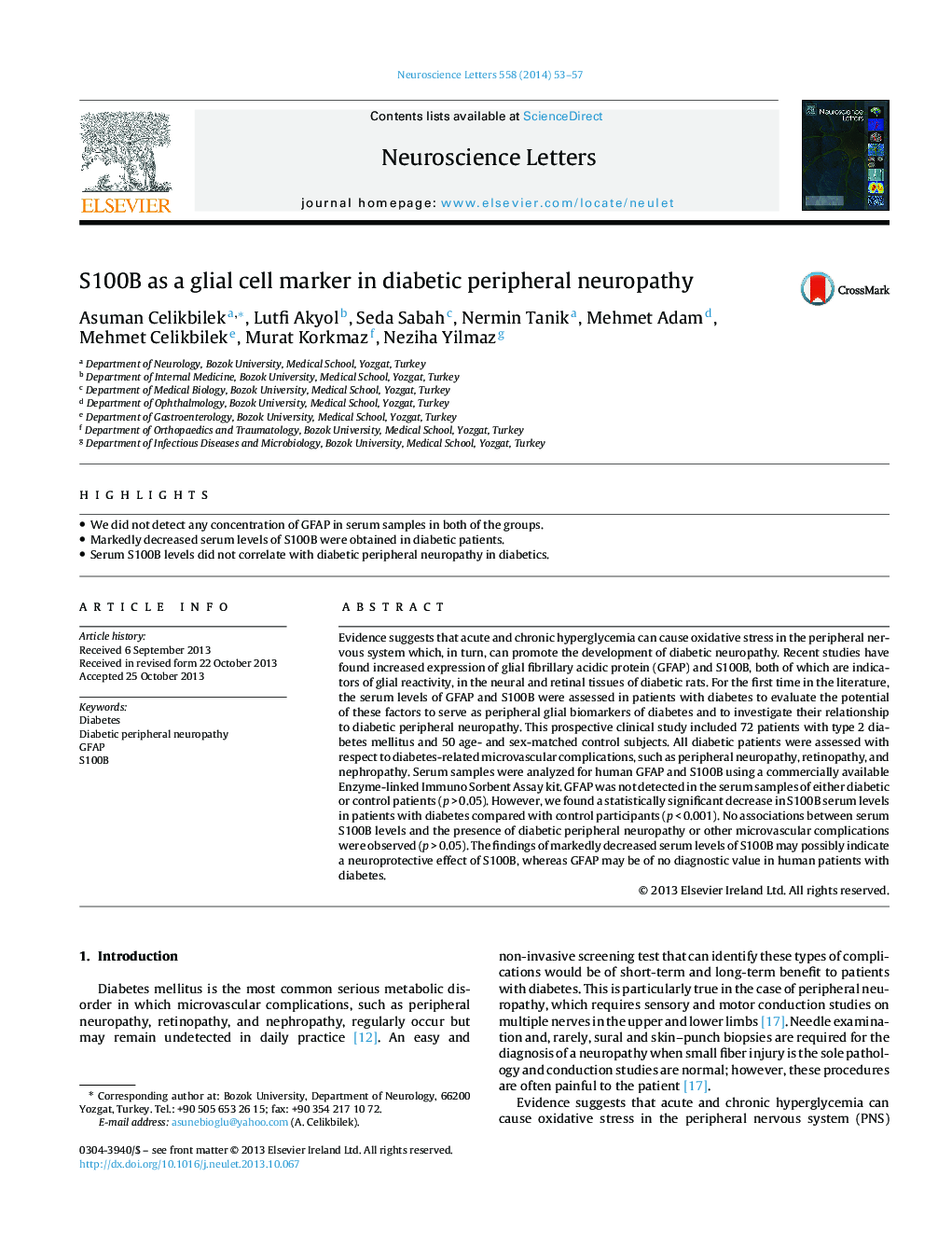| Article ID | Journal | Published Year | Pages | File Type |
|---|---|---|---|---|
| 6282455 | Neuroscience Letters | 2014 | 5 Pages |
Abstract
Evidence suggests that acute and chronic hyperglycemia can cause oxidative stress in the peripheral nervous system which, in turn, can promote the development of diabetic neuropathy. Recent studies have found increased expression of glial fibrillary acidic protein (GFAP) and S100B, both of which are indicators of glial reactivity, in the neural and retinal tissues of diabetic rats. For the first time in the literature, the serum levels of GFAP and S100B were assessed in patients with diabetes to evaluate the potential of these factors to serve as peripheral glial biomarkers of diabetes and to investigate their relationship to diabetic peripheral neuropathy. This prospective clinical study included 72 patients with type 2 diabetes mellitus and 50 age- and sex-matched control subjects. All diabetic patients were assessed with respect to diabetes-related microvascular complications, such as peripheral neuropathy, retinopathy, and nephropathy. Serum samples were analyzed for human GFAP and S100B using a commercially available Enzyme-linked Immuno Sorbent Assay kit. GFAP was not detected in the serum samples of either diabetic or control patients (p > 0.05). However, we found a statistically significant decrease in S100B serum levels in patients with diabetes compared with control participants (p < 0.001). No associations between serum S100B levels and the presence of diabetic peripheral neuropathy or other microvascular complications were observed (p > 0.05). The findings of markedly decreased serum levels of S100B may possibly indicate a neuroprotective effect of S100B, whereas GFAP may be of no diagnostic value in human patients with diabetes.
Related Topics
Life Sciences
Neuroscience
Neuroscience (General)
Authors
Asuman Celikbilek, Lutfi Akyol, Seda Sabah, Nermin Tanik, Mehmet Adam, Mehmet Celikbilek, Murat Korkmaz, Neziha Yilmaz,
